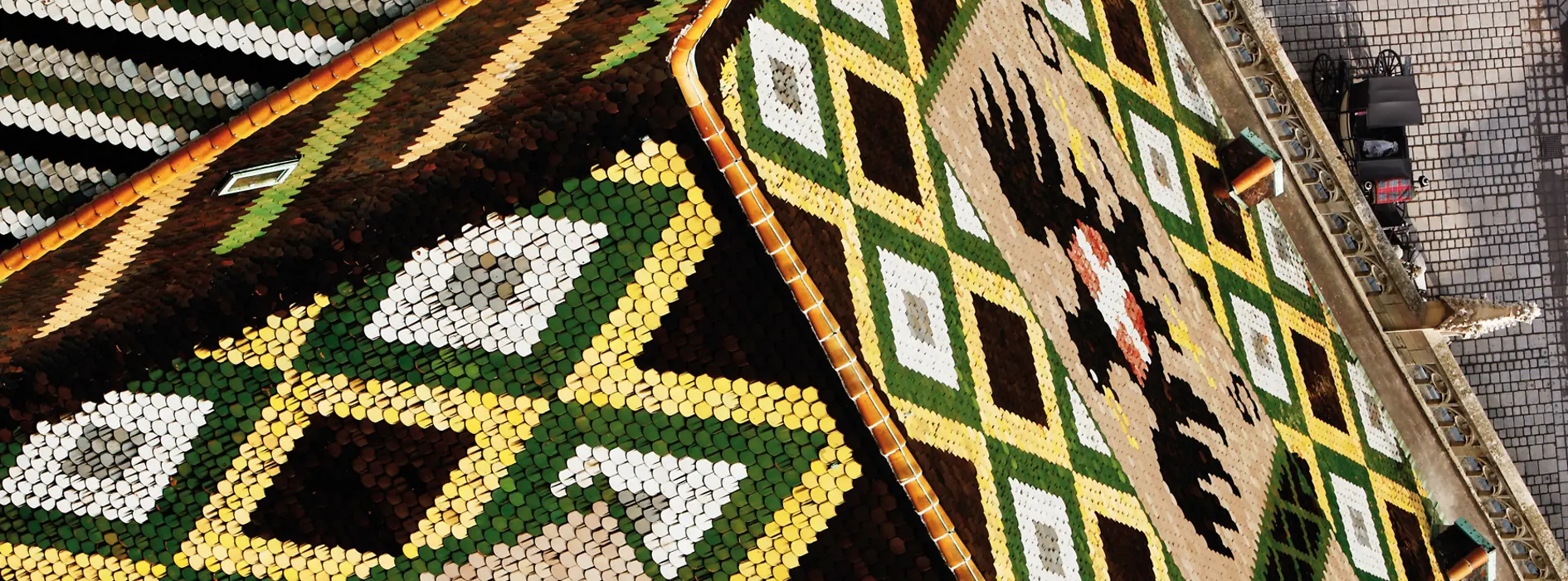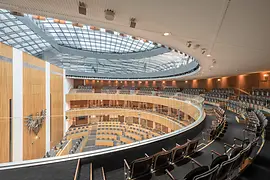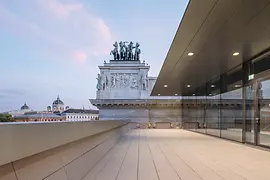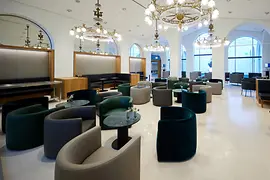Vienna Media News – March 2023 Return to Splendor – Newly Opened Up Parliament
Debates have taken place inside the Parliament building on Vienna’s showpiece Ringstrasse boulevard since its inauguration on December 4, 1883 – and again since February 2023, following a lengthy refurb. The National Council and the Federal Council returned from their temporary quarters at the Hofburg palace. And a lot has changed, not just structurally. Austria’s leading political building has been opened up like never before to bring the democratic experience to life for everyone. And the power of the symbolism behind the idea is plain to see: on the two open days on January 14 and 15 some 25,000 people visited the newly reopened Parliament to see everything for themselves.
Open to Everyone
The new visitor center is located directly below the magnificent portico, right in the center of the building complex. Known as the Demokratikum, it provides a multimedia treatment of the history of Austrian parliamentarism in 27 sections. Among other things, visitors can have a digital conversation with the country’s top politicians. Or vote on some of the questions once debated in session before comparing their takes with those of the real life parliamentarians. The parliamentary library is also open to the public, and all that freshly acquired knowledge can be built on in the reading room. Information is available in German and English. There are also things to see and do for young people. The sessions of the National Council can be followed free of charge from the glass-fronted gallery. Also free, there are various guided tours, covering a range of focuses such as the parliament as a political institution, the architecture of the building and the numerous works of art that were put on show here after the renovation project. The Democracy.Power.Places tour which takes in the area around Heldenplatz highlights the development of Austrian parliamentarism.
Catering to Everyone
At the newly opened parliament building, visitors can sit down to eat next to the politicians: the wide range of F&B options literally caters to everyone. A restaurant specializing in seasonal Austrian cuisine, Kelsen – named after the man who drafted the Austrian Federal Constitution (Hans Kelsen) – is also open to non-politicians for lunch and dinner. And on Saturdays, it offers a “flying breakfast”, where supplies are constantly replenished, tableside. And Cantina has similar food, but follows a self-service format instead. There are even cakes and pastries from the in-house patisserie as well as classic Austrian dishes and snacks to be had at Bistro, which turns into a cocktail bar in the evenings.
All New
During the five-year construction project no stone was left unturned in the Parliament, however much was painstakingly restored and reused rather than replaced. Like the steel eagle that is once again hanging in the National Council Chamber, to pick one such example. The chamber itself is today flooded with natural daylight now that the old copper roof has been removed and replaced with a giant new glass dome. Monitors and plenty of other digital technology ensure that the delegates are always in the loop, without having to leave their seats. The building has also burnished its sustainability credentials with temperatures inside now regulated by district heating and cooling. In spite of all the changes, the Parliament has lost none of its original charm. Architectural studio Jabornegg & Pálffy, which has a proven track record of ambitious restoration projects, aligned its work strongly to the materials and interior design ideas of the Parliament’s original architect Theophil Hansen.
Prime Property Portfolio
Following projects for the Musikverein and the Academy of Fine Arts, Hansen was commissioned with the Parliament redesign. The Danish-Austrian architect chose the Greek Revivalist style in a clear reference to ancient Greece, the cradle of democracy. The numerous columns, the triangular pediment and the countless statues set the architectural tone. Ancient goddesses define the aesthetic: from the fountain with Pallas Athena (the goddess of wisdom) in front of the main entrance to the figure of Nike (messenger of divine power and victory) looking down from the roof.
For printable versions of these images, please contact: www.parlament.gv.at or photo@parlament.gv.at
Contact
Helena Steinhart
Media Relations
+43 1 211 14-364
helena.steinhart@vienna.info







